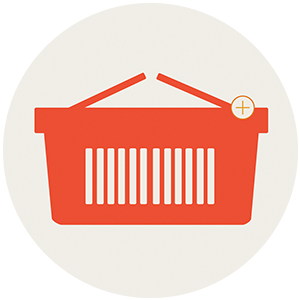Shopify has become a leading e-commerce platform for businesses looking to set up an online store. Its user-friendly interface, extensive app ecosystem, and robust support make it an attractive option for entrepreneurs. Whether you’re a seasoned developer or just getting started, there are key aspects of Lynchburg Shopify website development that everyone should know to streamline the process and ensure a successful launch. This guide will cover the essential steps and offer tips on keeping your project on track.
Understanding Shopify: The Basics
Before diving into the development process, it’s crucial to understand what Shopify offers. Shopify is a comprehensive e-commerce solution that provides everything from website hosting to payment processing. Here are some basic features:
- User-Friendly Interface: Shopify’s intuitive design makes it accessible for users with varying levels of technical expertise.
- Customizable Themes: Choose from a variety of free and premium themes to give your store a professional look.
- App Store: Enhance your store’s functionality with thousands of apps ranging from marketing tools to inventory management.
- SEO and Marketing Tools: Built-in features help improve your store’s visibility and drive sales.
- 24/7 Support: Access to customer support via phone, email, or live chat ensures help is available when needed.
With these features in mind, Shopify can be a powerful tool for anyone looking to launch an online business.
Key Steps in Shopify Website Development
Developing a Shopify website involves several critical stages. Understanding each step can help you manage the process more effectively.
1. Planning and Strategy
Before any development begins, it’s essential to plan your project thoroughly. This phase includes:
- Defining Goals: Clearly outline what you want to achieve with your Shopify store. Are you looking to increase sales, expand your customer base, or enhance brand visibility?
- Target Audience: Identify your ideal customers. Understand their preferences, needs, and online shopping habits.
- Competitor Analysis: Study your competitors to identify their strengths and weaknesses. Use this information to differentiate your store.
- Budget and Resources: Set a realistic budget for your development project and allocate resources accordingly.
2. Design and Customization
With a plan in place, it’s time to design your store. Here are the key considerations:
- Theme Selection: Choose a theme that aligns with your brand identity. Consider both free and premium options, and ensure the theme is mobile-responsive.
- Branding: Customize your store’s appearance to reflect your brand. This includes logo placement, color schemes, and typography.
- Navigation: Design an intuitive navigation structure to enhance user experience. Easy access to products, categories, and essential pages is crucial.
- Content Creation: Develop compelling product descriptions, engaging images, and informative content to attract and retain customers.
3. Development and Integration
The development phase involves setting up the technical aspects of your Shopify store:
- Domain Setup: Choose and register a domain name that represents your brand. Connect it to your Shopify store for a seamless experience.
- Payment Gateways: Integrate secure payment gateways to facilitate transactions. Shopify supports various options, including credit cards, PayPal, and more.
- Shipping and Taxes: Configure shipping rates and tax settings based on your business model and target market.
- App Integrations: Enhance your store’s functionality with essential apps for email marketing, analytics, and customer support.
4. Testing and Launch
Before going live, thorough testing is essential to ensure everything works smoothly:
- Functionality Testing: Test all features, including checkout processes, payment gateways, and app integrations.
- Usability Testing: Ensure the website is user-friendly on all devices. Check for broken links and navigation issues.
- Performance Testing: Analyze page load times and optimize for speed. A fast website improves user experience and SEO rankings.
- SEO Optimization: Implement SEO best practices to enhance search engine visibility. This includes meta tags, alt text, and keyword optimization.
Once testing is complete, it’s time to launch your store. Announce your store’s opening through marketing channels to attract initial traffic.
Keeping the Timeline Moving
Developing a Shopify store can be time-consuming, but there are strategies to keep the timeline on track:
- Set Clear Milestones: Break the project into smaller tasks with defined deadlines. This helps monitor progress and identify potential delays early on.
- Communicate Effectively: Maintain open communication with your team and stakeholders. Regular updates ensure everyone is aligned and can address issues promptly.
- Use Project Management Tools: Leverage project management software to organize tasks, track progress, and manage resources efficiently. Tools like Trello, Asana, or Monday.com can be beneficial.
- Prioritize Tasks: Identify critical tasks that directly impact the project’s timeline and prioritize them. This helps avoid bottlenecks and keeps the development process moving.
- Be Prepared for Changes: Flexibility is key in any development project. Be prepared to adapt to changes and reallocate resources as necessary.
Post-Launch Considerations
Launching your Shopify store is just the beginning. Continuous improvement and management are vital for long-term success:
- Monitor Performance: Regularly review analytics to understand customer behavior and identify areas for improvement.
- Update Content: Keep your store fresh with updated product descriptions, blog posts, and promotional content.
- Customer Feedback: Encourage customer reviews and feedback to enhance credibility and make necessary adjustments.
- Security and Maintenance: Regularly update apps and themes to protect your store from security vulnerabilities.
Lynchburg Shopify Website Development
Shopify website development is an exciting journey that can lead to significant business growth. By understanding the key steps and employing strategies to maintain the timeline, you can create a robust and successful online store. With dedication and continuous improvement, your Shopify store can become a valuable asset in your business’s success story. If you’re looking for Lynchburg Shopify website development, get in touch with us today!

Understand Shopping Trends
We’re dropping our next newsletter in July 2025. Sign up for exclusive freebies, giveaways, and industry insights.


